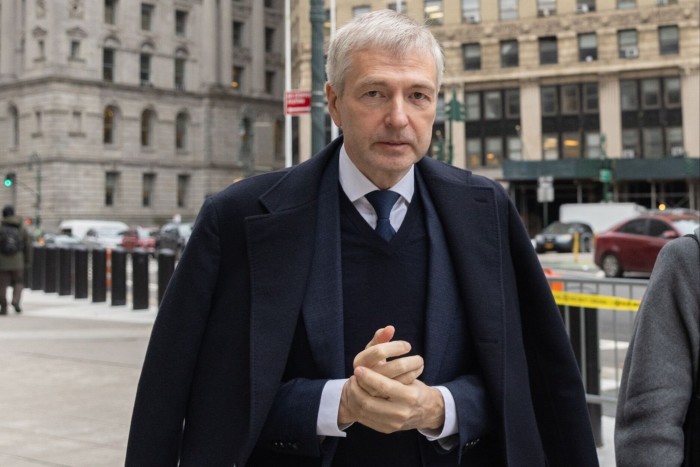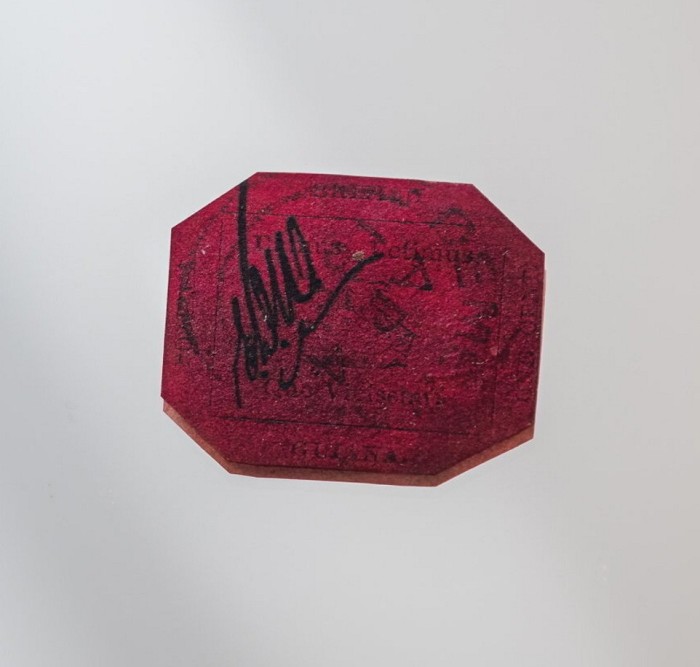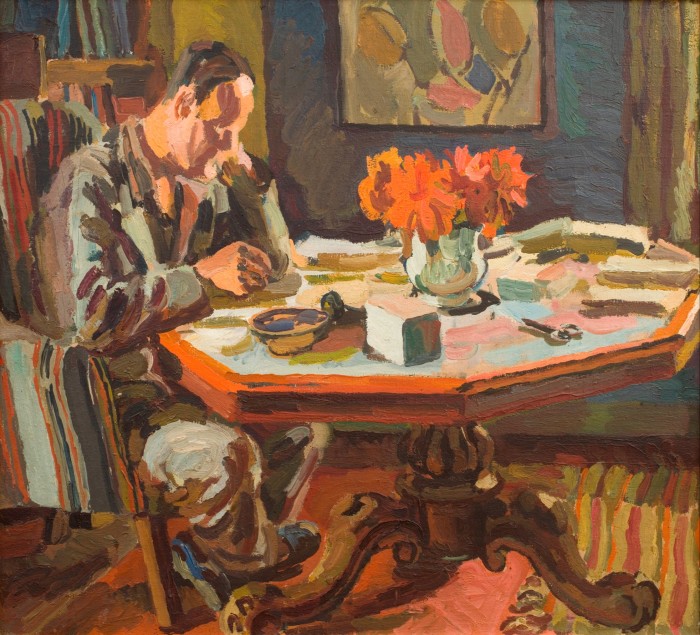Consolidation looks to be the word of the year for the art market as businesses seek more clout in an increasingly competitive environment. January has kicked off with the merger of two US auction houses, Chicago’s Hindman (which made $100mn sales last year) and Philadelphia’s Freeman’s ($32mn). Their first move as Freeman’s|Hindman is to open a saleroom on New York’s Upper East Side this month, its sixth in the US. By joining forces, under chief executive Alyssa Quinlan — CEO of Hindman since January 2023 — the business can “consider other opportunities” in the “upper-middle” auction market in the US and internationally, a statement says.
In other news, ArtNova, an investment fund focused on cultural industries, has acquired The Art Business Conference, founded by Louise Hamlin in London in 2014. The deal means that The Art Market Day event in Paris, organised through ArtNova’s Beaux Arts & Cie brand since 2018, will become The Art Business Conference Paris for its next outing in November. Hamlin, who becomes CEO of London, New York and Paris and retains a minority stake in the business, says that her existing events will get a “boost” from the new ownership while “opening up new destinations in the near future,” including a return to Asia in 2025.
In London, Richard Green gallery has merged its two New Bond Street galleries into one space — its larger, five-storey headquarters at 147 — having “accepted a favourable offer from a fashion house” to lease its other building, says CEO Jonathan Green.

Get the popcorn out as the art market year starts with a rare courtroom drama. This week, Dmitry Rybolovlev began his suit against Sotheby’s in New York, alleging the auction house “aided and abetted” his former middleman Yves Bouvier to inflate valuations of works that the Russian billionaire went on to buy. Sotheby’s “strenuously denies all claims,” confirms its counsel, Marcus Asner of Arnold & Porter.
Proceedings began on Monday with opening statements from both parties’ representatives, and testament from Mikhail Sazonov, Rybolovlev’s adviser and art purchasing assistant, the next day. The plaintiff’s fraud-related complaints, filed through Rybolovlev’s company, centre on four works out of the 15 originally claimed and include Leonardo da Vinci’s “Salvator Mundi” (c1500), which Rybolovlev bought for $127.5mn in 2013 and which later sold for an all-time record of $450.3mn at Christie’s (including fees). The other disputed works are by René Magritte, Gustav Klimt and Amedeo Modigliani.
The case could run until February 16, the judge said, with a potential witness list that includes gallerist Larry Gagosian and Helena Newman, chair of Sotheby’s Europe.




Galleries are gearing up for Frieze Los Angeles (February 29-March 3) as the still-emergent West Coast scene proves an opportunistic magnet for newcomers and older-timers alike. Starting out is Emma Fernberger, who previously worked for Bortolami and Team galleries, and opens her first space on January 26 in LA’s buzzing Melrose Hill area. The Manhattan-born Fernberger says she “fell in love” with her new hometown when she initially moved there for a year in 2015 and later with the “walkable” neighbourhood, something of a rarity in LA. Fernberger’s space is relatively modest — a total 2,000 sq ft — but, she says, as the daughter of a cinematographer, “I splashed out on a [high spec] German lighting system.” She opens Fernberger gallery with a show of new pastels and paintings by the California-born Nicole Wittenberg ($10,000-$82,000).
Meanwhile the French mega-gallerist Emmanuel Perrotin is preparing to open permanently in Mid-City, after what he describes as a “soft opening” last year. He has taken on the same space — a striking former 1930s-founded cinema and a comedy club — and opens at the end of February with a range of work by the Japanese contemporary artist Izumi Kato (prices up to $300,000 for paintings). Perrotin has appointed Jennifer King, previously a curator of contemporary art at LACMA for 10 years, as a senior director. The new space marks Perrotin’s first major initiative since selling a 60 per cent stake in the gallery to the private equity firm Colony Investment Management in June, though he says the LA venture was in the planning “for many years before”.




As art businesses experiment with fractionalised ownership, comes a warning sign from Stanley Gibbons, a longstanding London stamps and coins auctioneer, sold in a fast-tracked administration deal managed by PwC to the Strand Collectibles Group in December. Pressure on the 167-year-old dealership had mounted after its shareholder, Phoenix SG Limited, financed the purchase of the 1856 British Guiana one-cent magenta stamp, described by the group as the “Holy Grail of philately”, for $8.3mn at Sotheby’s in New York in 2021. Stanley Gibbons then fractionalised the stamp but stopped the process after a 15 per cent take-up, opting instead to create a secondary market, a spokesman says. Stanley Gibbons’s debt had reportedly reached £20mn by the end of 2023, though the spokesman would not confirm.
Tom Pickford, CEO of the Phoenix-owned Strand Collectibles Group, confirms that Stanley Gibbons was “unable to find a solution to its longstanding historic liabilities” adding that “all operations, the senior management team, all employees, both brands [including its coin dealership Baldwin’s], all inventory, all items on consignment for auctions and storage, and all other intellectual property and assets have transferred to the new company.”




Charleston, the former Sussex home and studio of many of England’s Bloomsbury group artists, is the museum partner for this year’s London Art Fair (Business Design Centre, January 17-21). On view will be works by some of the group’s best-known names, including Vanessa Bell and Duncan Grant, while Charleston will also offer a facsimile of a rug designed by Grant for £16,000, to benefit the museum.
The showing marks the start of Charleston’s 50 for 50 project, a search for 50 significant Bloomsbury group works that are still in private hands. The charity, which safeguards the house, gardens and collection, hopes to acquire these ahead of its 50th anniversary in 2030. “There are people who might be sitting on a beautiful Bloomsbury painting and might want to return it to Charleston, either immediately, as a bequest or through the UK’s Cultural Gifts Scheme,” says Nathaniel Hepburn, director and chief executive.
Follow FTWeekend on Instagram and X, and subscribe to our podcast Life and Art wherever you listen
This post was originally published on this site be sure to check out more of their content







